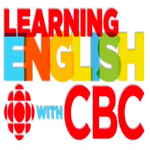
Learn English with News: 30+ Online English News Resources to Bookmark Today
English news articles will expose you to important everyday vocabulary and help you master English sentence structure.
To get you started, I’ll show you my 30+ favorite English learning news resources.
Contents
- 1. Choose English News Learning Sources at Your Level
- 2. Add High-quality Authentic English News Sources
- 3. Watch and Read English News That Matches Your Interests
- 4. Read the News Out Loud with a Pen in Hand
- Why Learn English Through News?
Download: This blog post is available as a convenient and portable PDF that you can take anywhere. Click here to get a copy. (Download)
1. Choose English News Learning Sources at Your Level
If you’re a beginner, no problem: you can watch and read the news online at a level that works for you, then go to more difficult stories at your own speed.
FluentU
With FluentU, you can browse hundreds of authentic English videos, including news broadcasts. There are a few different kinds of news you can find on FluentU, including news segments about current events, special programs about specific topics, debates, sports coverage, discussions of new technology and much more.
FluentU makes every video easy to follow no matter what level you are: Just read along with the accurate subtitles. If you hear a word you don’t know, click on it to see an in-context definition, read example sentences, hear an audio pronunciation and see the word in use in other FluentU videos.
You can also add words to flashcard decks and review them with personalized quizzes. If you’re using the iOS or Android app, you’ll even get a chance to speak each word thanks to speaking questions.
Plus, after every video on FluentU, you can take a quiz to see how well you understood the language in the video.
The Times in Plain English
As clearly stated on the front page, The Times in Plain English is about “clear writing” for “global reading.” It makes authentic English news articles easier to understand for a worldwide audience.
This means that beginners can get a daily dose of easy English news without having to pick up their dictionary every five words!
The site takes articles from various publications, including The New York Times, and rewrites them in short, concise sentences using common vocabulary. Topics include health, education, law, immigration, money and work. You can find a link to the original article, for when you want some more challenging English news reading practice.
The site is easy to navigate and you can also subscribe to a newsletter to receive new articles straight to your inbox.
The New York Times ESL Articles
The Times in Plain English is not directly connected to The New York Times, but this ESL news resource is.
It’s a weekly column on The New York Times Learning Network that’s perfect for American English language learners. It features stories that are written in a way you can understand.
After you read, take the quizzes on punctuation and word choice.
And it’s free!
“Words in the News” on BBC Learning English
The BBC offers a daily program called “Words in the News” for upper levels of British English learning. The reports show you important words, then show you a news story that includes those words.
The words can be difficult, though. Don’t be surprised if you need to review the words in the quiz that comes with the program.
ESL Video
ESL Video features a range of English videos, including news clips, which are accompanied by content made by teachers.
The site is free and the additional content includes quizzes.
The news videos sometimes have transcripts available, so you can read along with what’s being said during the video.
As we mentioned above, not all of their videos are news videos. However, the ones that are can be divided into categories like “science and technology,” if you want to practice specific vocabulary.
Learning English with CBC
This Canadian news site is geared toward English learners and has plenty of news videos and some audio clips.
The videos are labeled with their English level, so you can choose the one that suits your study needs.
The subjects cover everything from Canadian news to sports to children’s news.
Each video is meant to help you practice English grammar, vocabulary and pronunciation while learning about current events and cultural facts about English-speaking countries.
The site also has an extensive archive of stories from 2017 and earlier, including news interviews and longer stories.
2. Add High-quality Authentic English News Sources
Lots of really mediocre (not so good) content is out on web. When you learn English through news, you want to go for quality.
Seek out authentic (designed for native speakers) English news articles and videos with crisp, clear language. The sentences should be short and declarative, which means they should use a subject-verb-object pattern. The writing in the story should be as easy to read as the headline (the title at the top of the story).
Try to find news sites where the staff comes from different cultures. The stories are more likely to give you more than one viewpoint (perspective) on a problem.
USA Today
USA Today has a lot to offer language learners, because the writing style is very direct.
There are countless stories on current events, American politics, national news and more. There are even videos covering these topics you can use to improve your listening comprehension.
Although it’s most popular for its news and political articles, USA Today also has several pieces covering money, sports, business and wellness topics, among others.
The Guardian Newspapers
The Guardian is another great source for varied English news stories. Plus, with a click on a tab, you can switch to English language vocabulary and news more suited to Americans, Brits and Aussies.
The Guardian offers English learners a large collection of English news articles with views on politics, culture, business, lifestyle, travel and more.
There are news reports and opinion pieces with high-quality writing, which often require an upper-intermediate to advanced level of English.
The Guardian’s Long Read provides some exciting additional materials to improve both reading and listening skills. The Guardian’s Learning English section has a crisp, clean writing style as well.
The New York Times’ Times Minute
This video channel from The New York Times features short current affairs videos. They contain smart analysis from the Times reporters and editors. They don’t take long to watch, as most videos are within two minutes. Basically, they’re short and sweet—ideal for improving your listening skills while you learn English with news.
The videos are accompanied by a related article, which makes for excellent, relevant reading material. Here’s a neat exercise to take advantage of both:
- First, read the article. Read at your own pace but give it your full concentration.
- Second, summarize the article based on what you read. Try to do the summary verbally in under two minutes, and ideally, use a voice recorder.
- Finally, watch the video. Compare your summary with the Times Minute’s video. The aim of this exercise isn’t to determine who did a better job, but to learn how to transform a story from a written format to a spoken one and pick out the core ideas.
You may also want to subscribe for full access to The New York Times. As The New York Times is of the best-known newspapers in the world, it’s one of the best resources for English news reading practice.
theSkimm
theSkimm is a daily e-newsletter that claims to give you all the most important news you need to start the day. Every morning, you’ll get pithy (short but expressive) summaries and insightful commentaries regarding the day’s headlines.
The newsletter’s popularity is thanks to the writers’ ability to turn sometimes dull news into something fun and quick to read. Rather than having to visit various sites to get all the important news of the day, you can skim it all quickly right in your inbox. It’s a lot more convenient!
As a language learner, you’ll also benefit from the news being shorter and down-to-earth. As humor plays a large part in theSkimm’s style, beginner learners without much exposure to American culture might miss a joke or two.
However, you’ll likely still find the newsletter engaging and will be motivated to use it for English news reading practice every day. (I know I am!)
BBC World Service’s Global News Podcast
This daily podcast from BBC World Service is ideal for improving your listening skills while commuting or doing chores around the house. On the podcast, a learner can listen to worldwide reporters who have various English accents (including American, British, Australian and Indian) or who speak English as a second language.
That makes valuable listening practice for English learners, because in the real world—the workplace, universities or social occasions—not only will you encounter accents from across the Anglophone world, but you may also rely on English to communicate with other non-native speakers who don’t share your mother tongue.
HuffPost
Previously known as The Huffington Post, HuffPost offers a more entertaining perspective on news and current events.
Depending on the edition, you can read American, Canadian, British and Australian coverage of a variety of topics. It is an ideal resource for intermediate English learners.
The Wall Street Journal
The Wall Street Journal is another major publication based in New York City that is famous the world over. You will find financial, political and culture news covered in every issue. It is often sold in newspaper kiosks even outside the US.
Politico
Politico is an American newspaper and journalism company dedicated to sharing political news. They’re non-partisan, which means they tend to stick to the facts rather than twisting the story to suit their political beliefs.
They’re one of the top American news sites when it comes to political news, and they’re constantly adding new videos to their website.
Politico focuses on American politics, so it’s very specific in terms of subject matter. This makes it a great source to use if you’re looking to become more familiar with how the U.S. government works.
It’s also a great place to learn about American politics and foreign policy, which can affect countries around the world.
Additionally, you can expect to learn a ton of great vocabulary by studying words related to government, economics, policy, etc.
CTV News
CTV News is a Canada-based news site that has tons of videos.
Their news videos cover both national and international stories. You’ll have access to just about any type of vocabulary you can think of, as there’s also extensive coverage of lifestyle news, such as pop culture, health and entertainment.
The best thing about this news source is that English captions are available with most of the videos. That means that you can check your understanding of pronunciation, learn how to spell a word or use the subtitles to help you know what words to look up in a dictionary.
SBS News
SBS News is based in Australia, exposing English learners to yet another unique English accent.
This is another resource that provides tons of opportunities to expand your vocabulary, as it covers a wide array of topics like small businesses, sports and cultural news.
While many of SBS News’ videos are focused on Australian news, there are tons of them that talk about world news as well.
New videos are added every few hours, so you’ll never run out of stories to watch.
Plus, just about every story is accompanied by a longer summary and additional photographs to provide you with more insight into what’s happening in the video.
While most videos are short, there are occasionally longer options that provide you with a deeper look at a story, which is perfect if you’re looking for a longer English lesson.
3. Watch and Read English News That Matches Your Interests
Politics isn’t your thing? Plenty of other types of English news are out there.
Finding news on topics you care about will keep you motivated to learn. Plus, it’s just a more interesting way to learn English through news!
ESPN Soccer
Love football/soccer? You know there are websites for that. If you’re an advanced speaker, ESPN may be a great site for you.
ESPN Soccer offers all the soccer coverage you want, including stories about the game in just about every country in the world. You may be able to see some broadcast videos if your cable provider can give you access.
Sports News Lists
As a beginner, you want to find the right kind of easy English news site that’ll talk about sports in a way you can understand. Lots of sports commentators speak very fast and seem to shout. You also usually don’t get to see the commentator as he or she speaks, which can make it hard to understand.
So instead, pick sources that break information down into smaller pieces. The Midfield Dynamo Football Site creates all its news in Top 10 lists.
The site is great for picking up on British idioms and humor. Real Clear Sports similarly regularly organizes news into Top 10 lists.
For example, you can find out the top NCAA tournament scorers and the top dumbest plays in sports history.
Kids’ News Sites
Sites designed for younger readers also work well for easy English news and still provide specific information that you find interesting.
For example, travel buffs will love National Geographic Kids and science fans will enjoy Kids Discover. Sports Illustrated for Kids can give beginning and intermediate learners their sports in text and video forms.
InStyle Magazine
How-to stories give information that you care about in a detailed way. How-tos do exactly what the name suggests: tell you how to do something that you want to learn.
InStyle Magazine offers instructions on everything from selecting the best lipstick to getting a good fit in petite (small) clothes. InStyle’s writing is clear and the words are ones you most likely want to know.
Runners World
If you like to jog for fitness, Runners World gives you lots of how-to information and videos on everything from picking the right shoes to getting ready for a marathon. As with lists, how-to stories put information together in an organized way. That structure helps you find patterns because the information comes in pieces that fit together neatly.
This American Life
Are you interested in learning more about American cultures and issues? This American Life offers fascinating, in-depth stories about life in the U.S.
This American Life is one of the first podcasts I ever subscribed to and remains my longtime favorite. You’ll hear everything from personal stories to investigative reports, always with powerful storytelling. You’ll find exciting, heartbreaking and inspiring insights into the lives of American people.
The stories from This American Life are ideal materials for advanced English listening practice. You’ll be exposed to natural conversational speech and a range of English accents. You can also test your understanding using episode transcripts available on the website.
If you’ve never heard of This American Life and feel overwhelmed by its large archive, I recommend starting with Serial, a spinoff podcast that went viral in 2014 and 2015.
The New York Times’ Modern Love
Modern Love is a very popular column in The New York Times, and it’s perfect for people who are interested in true personal stories. It focuses on stories of love, loss and redemption (being saved or making things better) and can stir up emotions that most of us have experienced at some point in our lives. The column has beautifully written personal essays, which are engaging and not too difficult to read.
For listening practice, check out the Modern Love podcast, which turns the stories into theatrical reading performances. There’s also a short interview with the people mentioned in each story in the second half of each episode.
The column and the podcast make a great resource for language learners. You can work on reading, listening and even speaking skills. The podcast performances by professional actors provide excellent examples of the rhythmic flow of English speaking, which you can practice imitating to perfect your own.
MSN News
MSN News gathers their news videos from the top U.S. news outlets, such as CNN, CBS, the Associated Press (AP), USA Today, The Washington Post and NBC.
You’ll find tons of high-quality videos on world news, U.S. news, politics, technology, etc.
You can use the website for free, and you can easily sort through the news by topic.
With such a wide variety of subjects, you can easily add new vocabulary to your repertoire (set of skills). Plus, you’ll never run out of videos to watch since the site adds new content daily.
BBC News’ YouTube Channel

They have playlists for related news stories, making it easy to learn about topics you’re interested in.
They have short videos around one to three minutes but also longer documentaries around 25 minutes to give you a fuller, more in-depth English lesson.
Since it’s a YouTube channel, you also won’t have to sort through written news articles to find the videos.
Good News Network
The Good News Network shares positive, happy news stories from around the globe. Their news categories include happier options, such as “inspiring” and “laughs.”
You can expect to watch videos about animals, families and kids.
The Good News Network typically provides more in-depth written summaries with its news videos.
In other words, there’s a longer summary of each video to help you understand what’s happening if you have trouble following the story.
The Irish Times
Despite being based in Ireland and focusing on local and national news, The Irish Times also supplies plenty of videos covering international news.
Their news covers everything from sports to politics to culture, so there’s something for everyone to enjoy.
What makes these videos nice for English learners is that each news segment is quite short. Videos can last as little as 30 seconds and typically don’t run much past two minutes.
This makes them a perfect, bite-sized English lesson for learners who have busy schedules.
TechCrunch
TechCrunch specializes in international news related to technology, including stories about the latest electronics, cars, apps, robotics and startups.
You can easily divide news videos by subject, such as interviews, reviews and gadgets (tech tools).
The best thing is that some of the videos have captions available in several languages, not just English.
That means that you may be able to find subtitles in your native language, which can be a big help when it comes to understanding the English videos.
Some caption options I’ve seen include Spanish, Italian, French, Dutch and Japanese.
“The Daily Show”
“The Daily Show” is an American news TV show that also lets you enjoy American comedy.
The show is currently hosted by Trevor Noah and pokes fun at current affairs, politicians and news stories.
You’ll learn a lot about American culture and how U.S. citizens perceive and interpret different news.
The great thing about this site is that there are thousands of shorter video clips to choose from and hundreds of full-length episodes available for free online.
Finally, if you can follow along with the news videos, you will surely have a good laugh!
4. Read the News Out Loud with a Pen in Hand
Instead of just reading words to a story inside your head, read the words out loud. Reading out loud helps you slow down and sort out the words’ meanings. This means you will actively learn English with news, rather than reading or hearing the words and then forgetting them.
If you don’t know a word, highlight it or write it down. If the meaning doesn’t become clear later in the paragraph, go back and look it up in a dictionary. Reading news is a great way to learn English because the articles tend to be short and the vocabulary tends to stay the same on each topic.
Let’s say you’re reading the Time for Kids article “Should Plastic Straws Be Banned?” As you read, you’re going to find unfamiliar words and idioms.
Right away, you’ll encounter the word ban. You’ve got your pen ready to write down the phrase. Rather than dragging out a dictionary, keep reading. It probably will become clear quickly that ban means to prevent people from having/using something. If the meaning doesn’t become clear, you don’t have to hunt for the word later. You’ve got your list ready.
If you don’t know a word in an online video, hit the pause button and write the word down. Come back to it later and find the definition.
Having the subtitles available for videos can make all the difference in learning English. Play the video with the sound on and listen carefully to the pronunciation. Rewind and play the same section again, but this time with the sound off. Read the subtitles (those words at the bottom of the screen) out loud.
You’ve already selected content at your learning level and on topics you care about. Reading the text with the video will help you build English vocabulary on things that interest you, plus give you more confidence in your pronunciation.
As mentioned earlier, you might find FluentU and its interactive English subtitles useful here. FluentU also has a video-based quiz that you might want to check out.
Why Learn English Through News?
Learn Relevant, Up-to-date Vocabulary
Language is about making sense of real-life issues. News programs focus on issues that you care about and on how you live your life. It makes sense to learn English in a context you can actually use.
Reading or listening to news keeps you up-to-date with the current discourse (conversations people are having) in English. Not only will you pick up essential vocabulary for political, economic and cultural issues, but you’ll also learn how these issues are framed and approached in the Anglophone world.
For example, let’s look at the way feminist issues have been discussed in the news throughout history. In English news articles from the early 20th century, you’ll find a major focus on women’s right to vote and you’ll frequently encounter the word “suffrage.”
In the early 21st century, feminist issues including equal pay at work or abortion options have become more topical (talked about), and you’ll find headlines like these: “Feminism, Abortion Rights and the Women’s March” (The New York Times) or “Gender pay gap means women ‘working for free from now until 2017′” (The Guardian).
It’s interesting to see how issues and language evolve (develop or change) throughout history. During your lifetime, which term do you think you’ll hear and use more often in English: “suffrage” or “gender pay gap?”
Improve Both Listening and Reading Skills
The news is accessible in many forms: broadcast on TV, aired on the radio (or through podcasts), printed in newspapers or displayed on websites.
English news articles are written clearly and directly, making them perfect for learning new vocabulary. Similarly, TV news reports are always spoken with a clear, standard accent from the region (like the U.S., U.K., etc.). This will help boost your listening comprehension skills.
Print and online news are useful for reading practice, as their content is relevant to your daily life. This means you can guess the meanings of words that you don’t know and remember them for longer. For example, if you check today’s weather section and see the word “downpour,” then go out and get soaked in the heavy rain, you’ll surely remember what “downpour” means in the future (and will know to grab your umbrella).
Similarly, radio and TV news is a great resource for practicing listening and picking up useful words. It’s also helpful for language learners because news broadcasters tend to speak clearly and slowly compared to conversational speech. Some TV news videos even come with subtitles, which means you can improve your listening and reading skills at the same time.
An Abundance of Free Resources
Many news publications and broadcasters have gone online to find a larger readership. Though some publishers ask for a subscription fee for premium or unlimited content (or appeal for some financial support through a membership program, like The Guardian does), you can choose to read countless pieces of news for free on the web, or get news delivered to your email inbox.
Whether you’re interested in entertainment, business or general headlines as you learn English through news, you’ll have at least limited free access to many major publications. You’ll also be able to find entirely free magazines and newspapers. Popular news sources with free online access include Vice, BuzzFeed News and Fast Company.
Learn English through news in a way that works for you! These four steps and tons of valuable recommendations for English news articles and broadcasts will get you started.
Download: This blog post is available as a convenient and portable PDF that you can take anywhere. Click here to get a copy. (Download)































